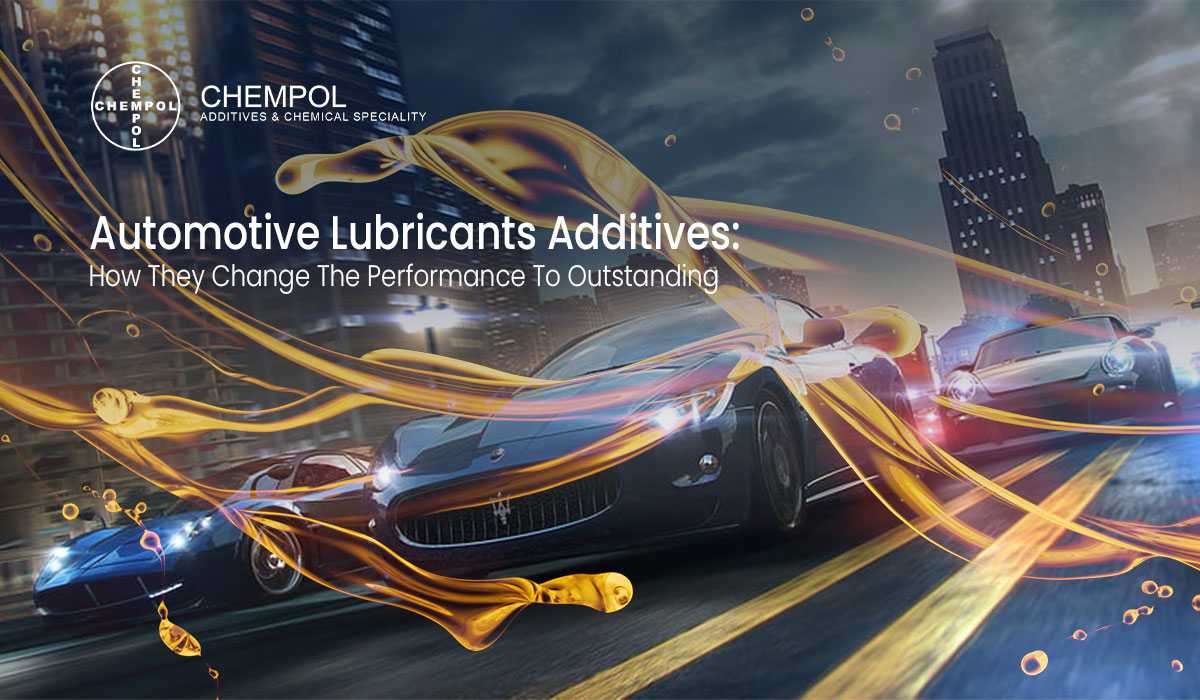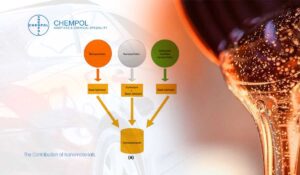
Automotive Lubricants Additives: How They Change The Performance To Outstanding
Lubricants are necessary for multiple machinery and vehicles to run smoothly and effectively. They enhance performance, fuel efficiency, and durability while reducing friction, wear, and corrosion. However, not all lubricants are made equal. Certain original equipment manufacturers (OEMs), like Mercedes-Benz, Volvo, Cummins, and others, have their own criteria and standards, and certain lubricants are particularly designed to fulfill their needs and demands.
To make sure that the lubricants they authorize are compatible with their engines and systems and provide the best possible protection and performance, these OEMs have their own criteria and testing.
Besides OEM approvals, some chemicals affect the performance of lubricants. These chemicals are additives. Automotive lubricants frequently include additives to give oils certain grades to accomplish these tasks with experts.
Additives may improve a lubricant’s performance in a number of ways. The following automotive lubricants additives guide will shed some light:
Anti-friction:
These additives lessen the friction between moving elements, lowering energy use and heat production.
Anti-wear:
These additives provide a shield of protection over the engine’s metal surfaces, preventing wear and increasing engine life.
Extreme pressure:
These additives avoid metal-to-metal contact, preventing seizure and damage under very high loads.
Antioxidant:
These additives keep the oil from oxidizing and degrading under high temperatures and pressures, allowing for more time between oil changes and less oil usage.
Anti-Corrosion:
These additives keep metal elements from corroding due to moisture or acid combustion products, improving engine implementation and cleanliness.
Detergent:
These additives keep pistons, valves, rings, and other engine modules clean and execute better by preventing the buildup of sludge and resin.
Dispersant:
These additives maintain the immobile impurities in suspension, preventing them from settling and blocking the oil filter or other passageways.
Viscosity Modifiers:
By enhancing the oil’s viscosity-temperature properties, these additives ensure enough lubrication is available at both low and high temperatures.
Pour Point Depressants:
These additives reduce the oil’s melting point, keeping it liquid at low temperatures.
Foam Inhibitors:
Stop the growth of air bubbles in the oil, which may lessen the oil’s lubricating properties.
Factors that contribute to the performance of automotive lubricant additives

The type and quantity of additives used in a lubricant will vary according to a number of factors, including the base oil type (mineral or synthetic), the application (automotive, industrial, or marine), the engine type (gasoline or diesel), the operating conditions (temperature, load, speed), and the OEM specifications.
In recent years, nanoparticles as lubricant additives have drawn more attention. Materials with at least one dimension between 1 and 100 nanometers are called nanomaterials. Nanomaterials’ distinctive physical and chemical characteristics may improve how well traditional lubricants smooth surfaces. The following are some benefits of using nanoparticles as lubricant additives:
- Tiny Size: To provide a trustworthy and competent lubricating layer to protect metal surfaces from friction, nanomaterials may fill in tiny holes and exterior bumps.
- High application: Because they can withstand high forces without changing their shapes or functions, these nanomaterials are well suited for high-working applications.
- Chemistries: Numerous substances or elements, such as metals, metal oxides, carbon-based materials, etc., may be used to create nanomaterials. This greatly expands the options for changing their parts and connections to the base oil and metal surfaces.
- High Reactivity: Nanomaterials have a high surface area to volume ratio, which results in more exposed atoms or molecules on their surface. This makes them more reactive with the basic oil or metal surfaces, which leads to the formation of strong bonds or coatings that may enhance lubricating characteristics.
The Contribution of Nanomaterials

The following are some examples of nanomaterials that have been researched as lubricant additives:
- Graphene is a single layer of a hexagonal network of carbon atoms. This has outstanding mechanical strength, electrical conductivity, thermal conductivity, and lubricity qualities. Graphene can decrease wear and friction by creating a thin, smooth coating on metal surfaces. Graphene can enhance the basic oil’s thermal stability and anti-oxidation qualities.
- Metal nanoparticles: metal nanoparticles with diameters varying from a few to tens of nanometers, including copper, silver, gold, iron, nickel, and others. They can roll or slide between the metal surfaces to act as solid lubricants. By developing protective coatings, or tribofilms, on metal surfaces, these nanoparticles can additionally improve the base oil’s anti-wear and extreme pressure capabilities.
- Metal oxide nanoparticles are particles of metal oxides with diameters ranging from a few to tens of nanometers, such as zinc oxide, titanium dioxide, cerium oxide, aluminum oxide, etc. By rolling or sliding across the metal surfaces, metal oxide nanoparticles may serve as solid lubricants. Metal oxide nanoparticles can also improve the high-pressure and anti-wear properties of the base oil by coating the metal surfaces with protective layers called tribofilms.
- Carbon nanotubes: Carbon nanotubes are cylindrical structures made of carbon atoms. Their lengths may reach several micrometers, while their diameters range from a few to tens of nanometers. Amazing mechanical strength, electrical conductivity, thermal conductivity, and lubricity characteristics may be found in carbon nanotubes. Carbon nanotubes may minimize wear and friction by producing a thin, smooth coating over metal surfaces. Carbon nanotubes may also enhance the base oil’s thermal stability and anti-oxidation qualities.
The Positive Results
Although laboratory testing and simulations of nanomaterials as lubricant additives have shown positive outcomes, there are still certain difficulties and restrictions with regard to their practical usage. Among these difficulties and restrictions are:
- Cost: Due to the high cost of synthesis, purification, and characterization, nanomaterials are often more costly than traditional additives. The performance gain over traditional additives, as well as their accessibility and scalability, determine how cost-effective nanoparticles as lubricant additives are.
- Dispersion: Due to their high surface energy and limited solubility, nanomaterials have a propensity to aggregate or silt in base oils. As lubricant additives, this may lessen their stability and efficacy. To achieve a consistent and stable distribution of nanomaterials in the base oil, appropriate dispersion techniques and agents are thus required.
- Compatibility: Nanomaterials may interact with the base oil or other lubricant additives, changing the characteristics or performance of those components. Nanomaterials, for instance, may interfere with the actions of other additives or change the viscosity, acidity, or flash point of the base oil. The best performance of nanoparticles as lubricant additives must thus be ensured via compatibility testing and analysis.
- Toxicity: Due to their tiny size, strong reactivity, and unknown effects on living creatures, nanomaterials can pose potential dangers to human health and the environment. Nanomaterials, for instance, may enter the body of a person through breathing, eating, or skin contact and have negative consequences, including inflammation, oxidative stress, or DNA damage. To verify that nanoparticles are safe to use as lubricant additives, toxicity testing, and evaluations are thus required.
Company That Leads The Way
Chempol is one of the top producers of lubricants and additives for the automobile sector. A leader in the petrochemical industry, Chempol creates formulas and produces chemical additives for lubricants and motor oils. Chempol specializes in offering top-notch products that satisfy the demands of the global lubricant industry. Chempol offers its own line of additives in the UAE and is extensively utilized in GCC nations, including those in the MENA, Asia, and Asia-Pacific.
Chempol provides a variety of products for use in automotive applications. the industry is a chemical supplier in UAE, including
- Chempol Diesel Engine Oil Additives are multipurpose additive packages that provide engine base oil with great performance and protection. They are compliant with API CK-4, CJ-4, CI-4 Plus, CI-4, CH-4, CG-4, CF-4, and CD-12 requirements.
- Chempol’s gasoline engine oil additives are multipurpose packages that provide gasoline engines with outstanding performance and protection. They adhere to API SN Plus, SN, SM, SL, SJ, SH, SG, SF, and SE 13 requirements.
- Chempol Viscosity Index Improvers: These polymer-based additives, known as Chempol, improve engine oils’ viscosity-temperature properties. They provide appropriate lubrication at both low and high temperatures. They come in a variety of forms, including hydrogenated styrene-diene copolymers (HSD), olefin copolymers, styrene-isoprene copolymers, and polymethacrylates (PMA).
- Chempol Marine Oil Additives: These multipurpose additive packages provide marine engines with outstanding performance and protection. They satisfy ACEA E7, E5, E4, E3, E2, and E1-15 requirements.
- Transmission oil additives by Chempol: These versatile additive packages provide great performance and protection for transmission systems. They follow ATF DEXRON VI, V, IIIH/G/F/E/D/C/B/A, and MERCON V/LV/SP/LT71141/DEX/MATIC/ATF+4/ATF+3/ATF+2/ATF+1/ATF requirements. SUFFIX A/T
Customized Solutions for Every Industry

Technological progress is reaching new heights, and we are trying to keep pace with the new technicalities and scientific advancements. With the emergence of new industries, smooth operations would only be possible with industrial lubricants and additives added to fulfill the challenge. Chempol, additives suppliers and manufacturer follows these developments closely and looks forward to any challenge in the automotive field.
Every industry has unique and different requirements, and Chempol understands those requirements. Thus, we design additives for every automotive, textile, food processing, or wind power industry. Our advanced research and developments aim to meet all kinds of lubricant applications.


